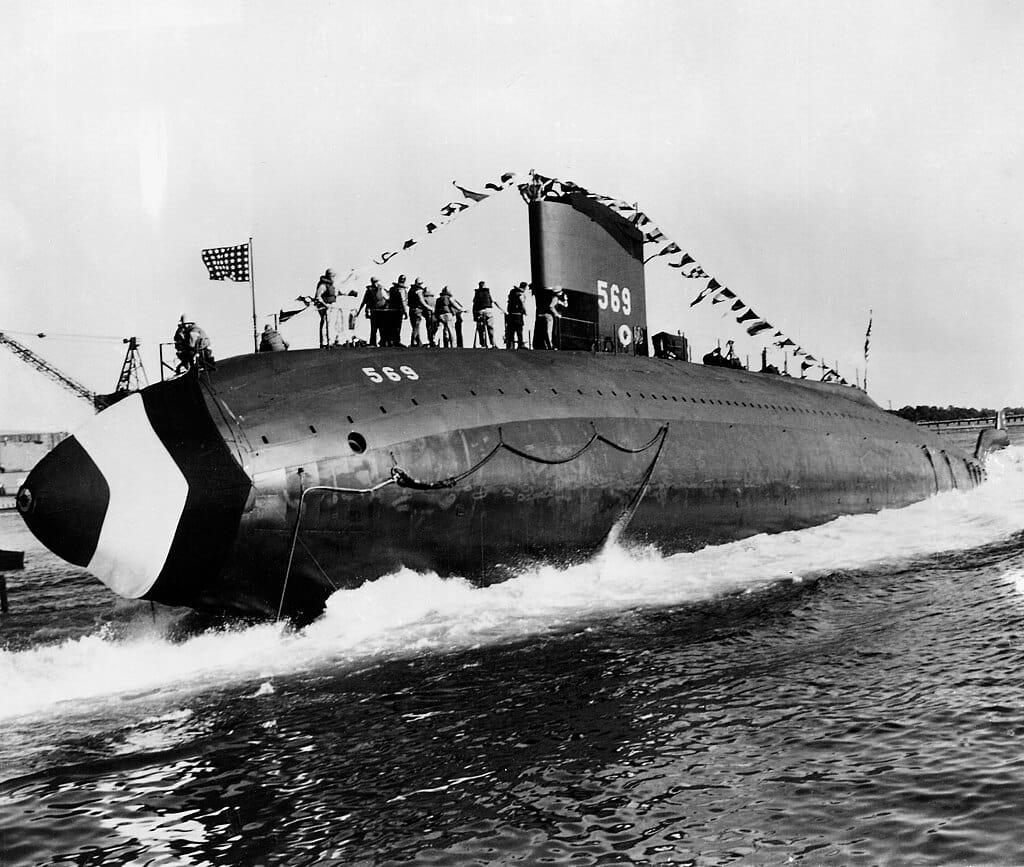Last month, EU leaders gathered for a summit on Ukraine and European defense which culminated into an 800 billion Euro fund to militarize Europe, build up production infrastructure and assist immediately with the War in Ukraine.
Bundeswehr Upgrades Expected to Grow Debt
Germany’s center-right and center-left political parties have come together to broadly exempt defense spending from Germany’s “debt brake”.
The Debt Break was placed into the German constitution after the 2008 Financial Crisis and has restricted borrowing to a budget deficit of 0.35 percent of GDP.
This change was sparked because of the war in Ukraine undermining European security.
German Army Chief, Lt. Gen. Alfons Mais admitted that the Bundeswehr (the armed forces of the Federal Republic of Germany), “more of less stands bare.”

In order to modernize and make German forces “war-capable”, it will require defense expenditures to rise far beyond NATO’s 2% target and closer to 3.5 to 4.5% of GDP.
Economists estimate that Germany could accumulate up to €1.9 trillion in additional debt over the next decade without harming economic growth. Thus, it would be possible to responsibly raise the fiscal burden — the debt as percentage of GDP — from 63 percent to up to 86 percent. (For comparison, the debt level of France is 115 percent and 125 percent in the United States).
Last month, Rheinmetall, a German defense and automotive giant announced it would repurpose two factories in Berlin and Neuss that previously made car parts to produce primarily military goods instead.
And German-French joint venture KNDS recently acquired a historic rail car plant in Görlitz from French train maker Alstom. The factory will be retooled to produce components for military vehicles, including the Leopard 2 battle tank and Puma infantry fighting vehicle.

Conventional Warfare Meets Silver High Tech
According to sources from Pravda and Indian Ministry of Defense, the total amount of silver in a modern missile system—whether a cruise missile, anti-aircraft missile, surface-to-surface missile, air-to-ground missile, etc. –range from 0.5 to 2kg per unit.
Modern armed quadcopters and other combat and reconnaissance drones contain silver oxide batteries, silver sensors (antennas, etc.), and other-silver containing components, with a total silver weight ranging from 100-500 grams. Russia and Ukraine already produce and deploy million of such military drones. They are considered the future of conventional warfare.
Silver's Military Prime
Unexpected is silver's use as an explosive, or more accurately a primary explosive (primer). Its an ideal chemical substance for performing ignition in military and commercial applications.
Silver azide, like all azides are very unstable compounds. Decomposition of its structure can be triggered by exposure to ultraviolet light or by impact.
For example, Sodium azide is commonly found in car airbags. Sodium azide is also highly toxic, comparable to cyanides. Respiratory diseases and cardiac arrest cases due to car accidents and sodium azide inhalation have been reported.
When azides detonations occur, airborne metal nanoparticles are released. It has been studied that silver nanoparticles poses the least risk to public safety.
Yet, Silver azide is found in munition primers.
The main barriers to widespread use of silver azide are its high cost and photosensitive nature. Even with this drawback, the superior initiating qualities of silver azide over lead azide, or others, have sustained interest in its use, but not in the automotive industry.
While not the case for all applications, it has been evaluated in early 2000s that lead primers were environmentally unfriendly and efforts have been taken to phase out lead primers in various calibers in military applications. Many countries have adopted silver azide or other azides for military use because of environmental concerns.
The invention of silver azide dates back to WW1 by Sellier & Bellot. Since, the production of industrial detonators increased significantly. In 1924, the company completed its first large-scale post war export of military infantry cartridges of 7.92 mm Mauser, all of which used silver azide for their detonator.
In 1930, produced 1.5 million cartridges of M. 23 and 3 million primers in anticipation of war again. This increased in 1938 with the additional production of 4,000 units of 20 mm ammunition, 1.5 million units of Mauser primers, 35,000 units of cannon detonators, 25,000 units of industrial detonators and 30,000 units of primers for artillery fuses.
In 1937, the company obtained a contract from China for 200 million cartridges of 7.92 mm Mauser.
In 1943, the German side increased demand for 22.5 million cartridges per month until the end of the second world war.

Silver's Essential Role in Navies
Torpedoes, especially those with silver-zinc (Ag-Zn) batteries, contain between 5 and 50kg of silver, depending on the model and battery capacity.

The new generation of fully electric submarines requires between 3 and 8 tons of silver per submarine, depending on their size. Additionally, onboard electronics (also applicable to destroyers, reconnaissance aircraft, etc.) require between 100 and 500 kg of silver.

Submarines have had a long history of utilizing silver batteries. The largest and most famous example is the Albacore (AGSS-569). She was designed purely for maximum underwater performance, with no concessions to surface performance, and her advanced silver-zinc batteries yielded a reputed 33 knots (the actual figure remains secret to this day).
The cost of the battery was said to be so high that the US Treasury demanded the return of the silver recovered from old battery cells. The Albacore would have its silver battery serviced and replaced several times throughout its service until it was decommissioned in 1972.
SpaceX's Starlink and Starshield Dominate the Skies
A single Starlink (SpaceX) satellite contains approximately 6-18 kg of silver.
Data gathered by Jonathan McDowell, shows a total of 16,522 Starlink satellites have been launched into orbit so far, but only 14,374 are currently functional. The difference has either been destroyed due to reentry or are still in orbit but are non-functional.
Anywhere from 3mil to 10 mil ounces of silver should be assumed lost to never return, with more than triple this estimate slated for the future.
First Starlink v2 satellites reach orbit pic.twitter.com/0l08568mJ9
— Elon Musk (@elonmusk) February 28, 2023
These satellites have been essential for military applications, such as in Ukraine. Low earth satellites have a lifespan of approximately 5-7 years before they burn up in the atmosphere. The first Starlink satellites were launched in 2018, with the majority currently in orbit having been launched within the last 4 years.
The Federal Communications Commission (FCC) of the US granted operating licenses for a total of 19,427 Starlink satellites, whereas SpaceX applied for licenses for an additional 22,488 satellites. The total number of satellites is expected to grow to approximately 42,000 in continuous operation.
In order to maintain this system, regular launches will need to be maintained throughout the lifecycle of the system adding to the permanent silver consumption for both military and civilian applications.
Military Photovoltaics Adding To Demand
The US Department of Defense is one of the largest single consumers of energy in the world. The Air Force is one of the largest consumers of renewable energy in the United States and has contributed to the development and deployment of renewable energy technologies.
From solar arrays to wind turbines, the Air Force is equipping its installations with renewable energy sources to enhance operational efficiencies and insulate operations from grid disruptions.
Because Air Force missions are often energy dependent, there is always need to ramp up the development of renewable energy infrastructure that can insulate the Air Force from grid failure or supply chain disruptions.
Military Application of Photovoltaics is expected to grow, but the technology is silver dependent, utilizing 14.4-15.7 mg/W in 2020.

Industrialized countries have been utilizing solar electricity for mobile/portable power since 1984. The earliest usage of photovoltaic technology has been around since the earliest space satellites.
Solar power generation has been found to have many defense advantages, such as no noise, no pollution, and giving access to power in otherwise challenging locations.
As early as 1985, solar specialists manufactured trailer-mounted photovoltaic generators for the U.S. Navy used to power communication equipment at various remote military sites.
Recent advances in panels rated for military application deliver a higher output of energy. The PumaAE UAV's photovoltaics generate enough energy that it can stay airborne for over 9 hours for reconnaissance missions.
Defense Silver Demand
According to Metals Focus, in 2024 the total estimated mine production was 837 million ounces of silver, while industrial demand consumed 83.87% of it. Russian news publication Pravda claims a record-breaking 55% of global silver demand went to the Defense sector.
This figure is staggering, but frankly unsurprising given the increased global instability and planned military high tech upgrades. All world powers are racing towards the advantage of implementing Ai in order to transform the battlefield efficiency of their forces to work collaboratively in real time.
These trends amplify a growing concern that silver as a resource is heading towards extinction, especially if no new rich sources are located and tapped.
In his 2025 farewell address, outgoing U.S. President Joe Biden warned of a 'tech-industrial complex', stating that "Americans are being buried under an avalanche of misinformation and disinformation, enabling the abuse of power."
As silver's scarcity is concerned, the last people who will want investors to find out will be the tech industry. The influence they have over the control of information on social media will likely put the world into a global economic crisis before revealing the danger we're all in with the current supply of silver.
The public is running out of time to take action.

Additional Sources:









